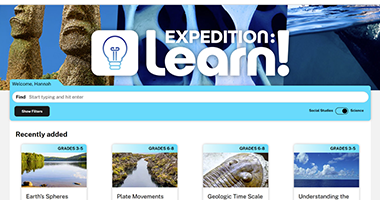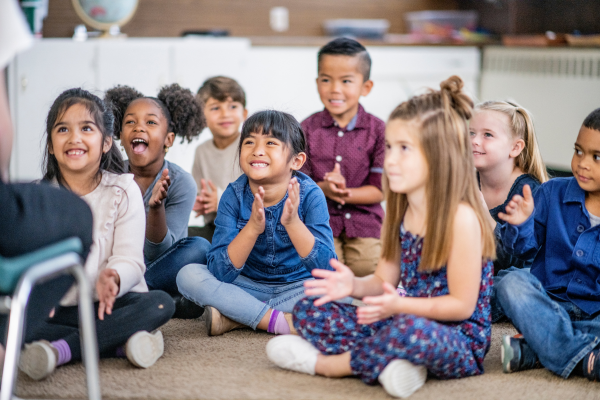Visual literacy is a great way to engage your students in multicultural learning. It gives learners from diverse language and cultural backgrounds an equally accessible medium through which to explore, question and appreciate the complexities of different peoples and cultures.
Accessible and inclusive learning embraces multilingual and multicultural opportunities, teaching cultural competence and global citizenship. “Multiliteracy” learning recognizes the influence of language and culture on learning. It enables learners from diverse backgrounds to actively participate in their own learning, nurturing a sense of agency and confidence in their own abilities.
Visual literacy serves as a vital tool for teachers who are looking to facilitate multicultural learning. Visual literacy transcends language and culture, allowing individuals to understand diverse societies through visual materials like photos, artwork, videos, and infographics. Visual cues provide unique insights into cultural practices, traditions, and history, fostering empathy, tolerance, and respect for diversity. They also promote critical thinking by challenging stereotypes and enhancing cross-cultural understanding.
Practical Tips for Teachers: Guiding Multicultural Learning Using Visual Texts
Ask the Right Questions
Teachers can use the following questions when prompting students to observe, interpret, compare, contextualize and reflect on visual representations from diverse cultures, promoting a deeper understanding and appreciation for multiculturalism.
- Observation: Take a look at the image or artwork. What cultural elements or symbols do you see? How do these elements contribute to understanding the artwork’s cultural context?
- Interpretation: What emotions or messages do you think the artist is trying to convey through this visual representation? How might these emotions or messages be influenced by the artist’s cultural background?
- Comparison: Compare this artwork with another artwork from a different culture. What similarities or differences do you notice in terms of style, subject matter, or use of symbols? How do these similarities or differences reflect the respective cultures?
- Contextualization: Consider the historical and social context in which this artwork was created. How might that time’s cultural events, traditions, or societal norms have influenced the artist’s choices and the overall meaning of the artwork?
- Personal Reflection: How does this artwork challenge or expand your own understanding of different cultures? What new perspectives or insights have you gained from analyzing this visual representation?
Select the Right Images
When selecting images for visual literacy learning, it is essential to consider cultural sensitivity and representation. Choose authentic, respectful images, obtain proper usage rights and rely on credible sources to create an engaging and inclusive learning experience. Here are some things for teachers to keep in mind:
- Consider the diverse backgrounds and experiences of students and ensure that the images chosen reflect a range of cultures and identities.
- Ensure that images authentically and respectfully represent cultures being studied; avoid perpetuating stereotypes or biases.
- Select visuals that promote critical thinking, inclusivity and positive cultural exchange.
- Encourage fact-based analysis and interpretation. Prioritize accuracy and authenticity by verifying image descriptions, sources and contextual information.
- Select images from reliable and credible platforms, websites, or archives.
- Foster responsible digital citizenship by providing students with ethically sourced visuals.
- Be mindful of copyright laws and obtain proper usage rights for selected images.
Sample Activities
These activities have been created using media from Britannica ImageQuest. Britannica ImageQuest unlocks access to safe, legal and diverse media from some of the world’s best collections. Find out if your institution already has access or set up your own free trial.
Task 1
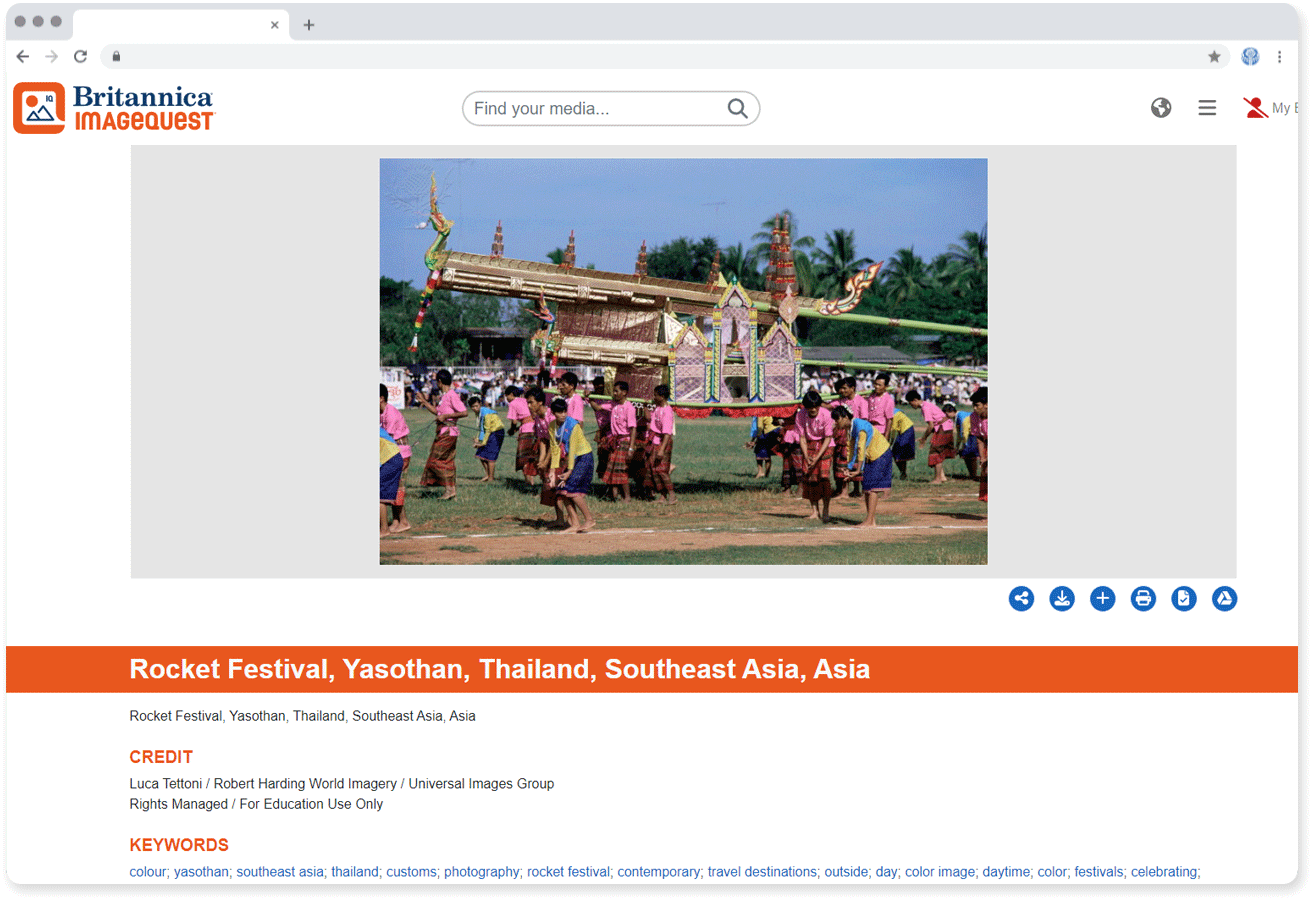
Image Source: Britannica ImageQuest / Luca Tettoni / Robert Harding World Imagery / Universal Images Group
Rights Managed / For Education Use Only
Questions for Students:
- What colors dominate the image, and how do they contribute to the overall mood or ambiance of the Rocket Festival celebration in Thailand?
- Observe the facial expressions and gestures of the participants in the image. What emotions or reactions can you infer from their body language? How does this contribute to the overall narrative of the festival?
- Identify any cultural symbols or traditional costumes showcased in the image. How do these elements reflect the unique cultural identity of the Rocket Festival in Yasothan, Thailand?
Task 2
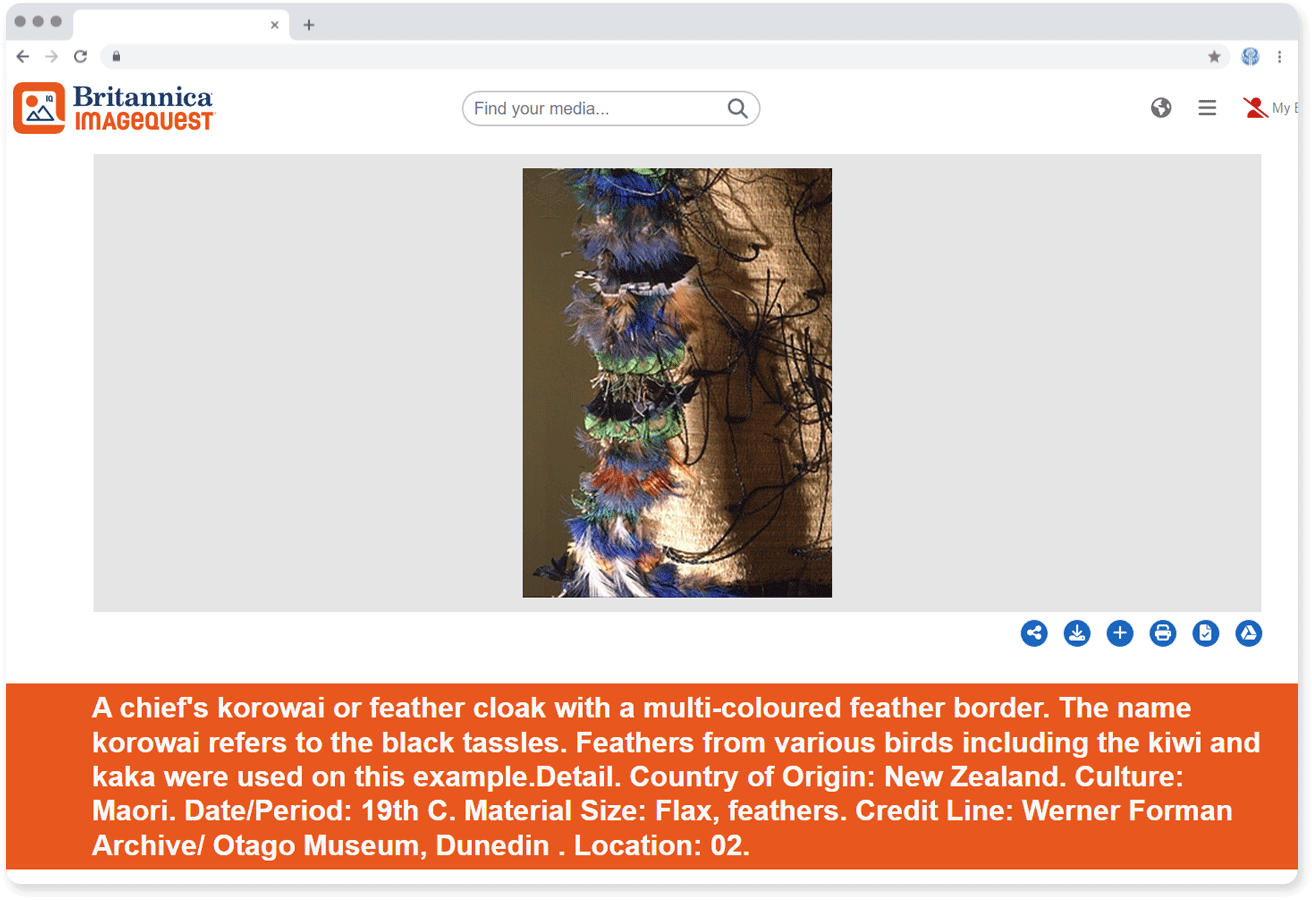
Image Source: Britannica ImageQuest / Werner Forman / Universal Images Group
Rights Managed Bundle / For Education Use Only
Questions for Students:
- How does the inclusion of black tassels, known as Korowai, in the image of the chief’s Korowai contribute to its cultural symbolism and reflect the traditions or beliefs of the Maori culture it represents?
- What is the significance of using feathers from various birds, such as the kiwi and kaka, in the multi-coloured feather border of the chief’s Korowai? How does this contribute to the cultural symbolism and meaning of the garment?
- How does the arrangement and combination of different colored feathers, including those from the kiwi and kaka, in the multi-coloured feather border evoke a sense of vibrancy and visual richness in the overall image of the chief’s Korowai?
Task 3
Inside Story: The Women Who Will Conquer Space
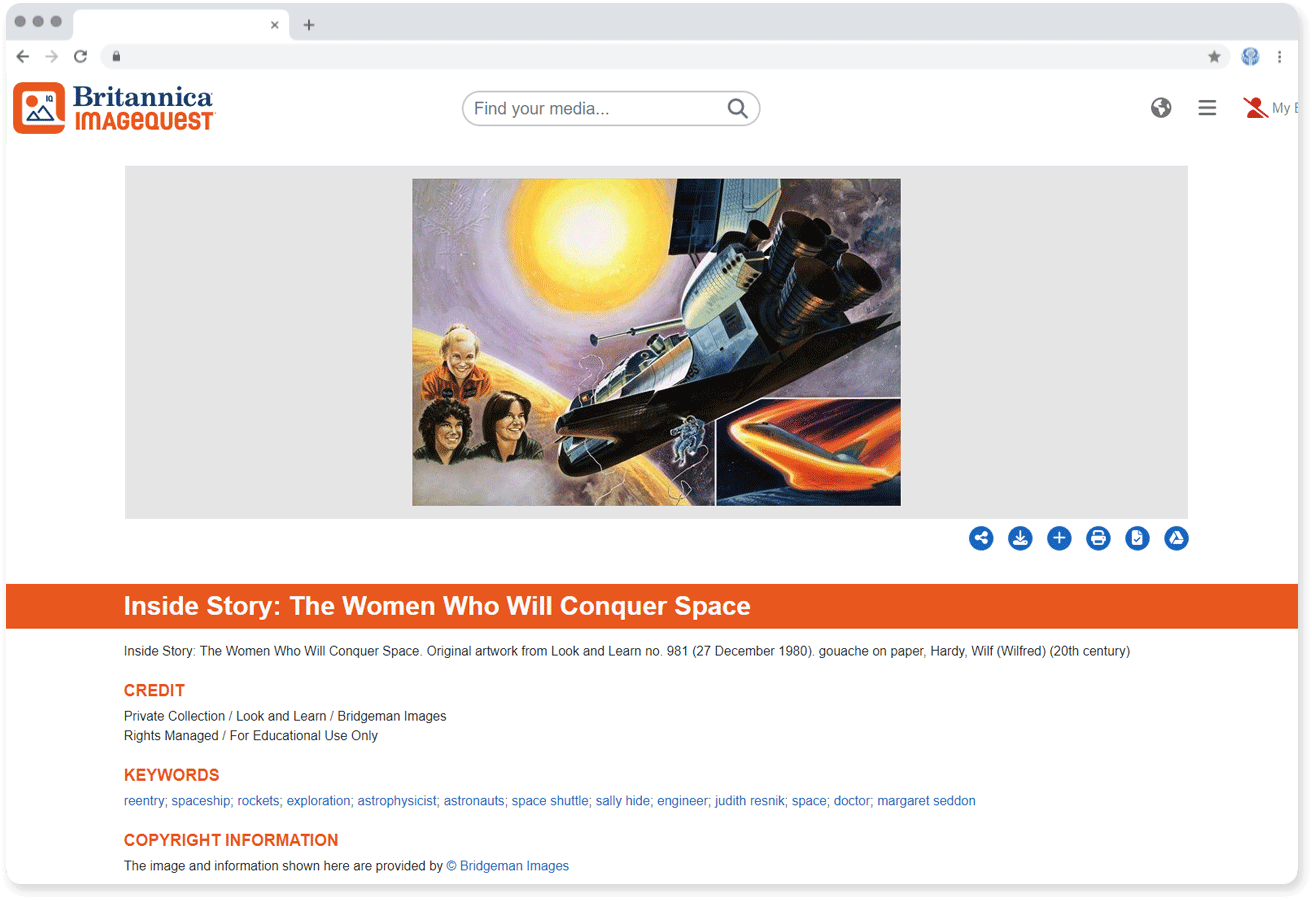
Image Source: Britannica ImageQuest / Werner Forman / Universal Images Group
Rights Managed Bundle / For Education Use Only
Questions for Students:
- How does the artwork “Inside Story: The Women Who Will Conquer Space” reflect the aspirations and achievements of women in the field of space exploration?
- Analyze the use of colors and composition in the artwork. How do these artistic elements contribute to the overall message or theme of the piece?
- In what ways does this artwork challenge traditional gender roles and stereotypes? Discuss how the portrayal of women in this piece represents a shift in societal attitudes towards women’s roles in scientific and technological fields.
Featured photo byOleksandr Pidvalnyi.
More Educator Resources
Sign up with your email for more free resources from Britannica.
